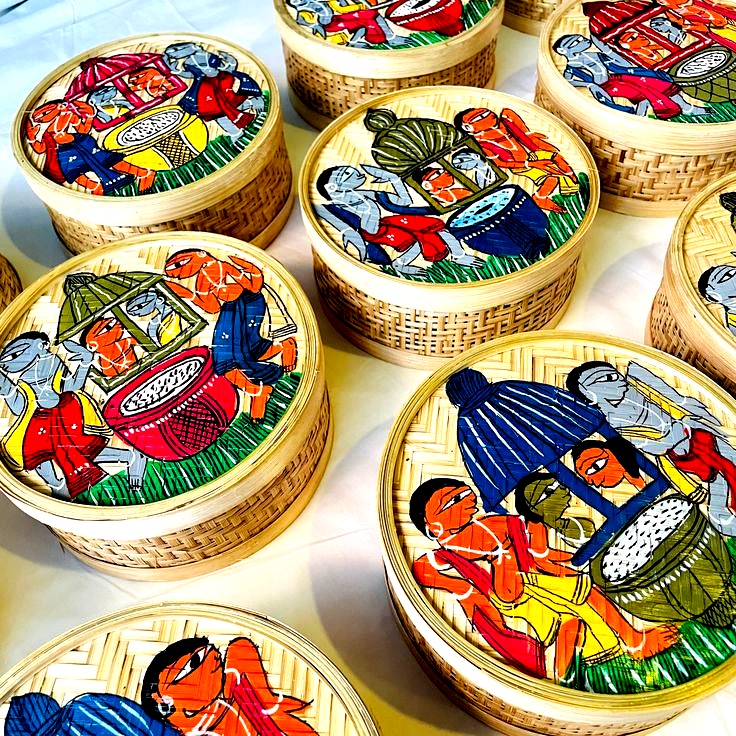SIGN UP FOR NEWSLETTER
Be the First to Know. Sign up to newsletter today

India has been one of the largest producers of bamboo and cane for centuries now. The beautiful yet eco-friendly products carved out of bamboo and cane by the tribal communities of Madhya Pradesh have created a unique mark for themselves in the Indian handicrafts sector.
Available at Delhi:- Assam Emporioum, Mrignayani, Panthoibo Manipur Emporium, Kairali, Utkalika, Nagaland Emporioum, Dilli haat
Think Madhya Pradesh and the names of a wide variety of exquisite handicrafts emerge at once. These are testimony to the glorious traditions of art, literature, and paintings in the ‘Heart of India’.
One of them is the Bamboo and Cane art form. Bamboo and Cane are available in abundance in the lush forests of Madhya Pradesh. The tribal communities of Gond, Baiga and Korku pride itself on some very talented artisans. These artisans use bamboo and cane to create beautiful fishing traps, lamps, baskets, trays, bamboo peacocks, motifs embossed on bamboo frames, hunting tools as well as a range of furniture accessories.
These tribal communities are primarily operative in the towns of Seoni, Shahdol, Mandla, and Balaghat.
Jati, Tita and Lejai are the three popular species of cane available in commercial quantities in India.
Ornamental and sophisticated articles such as hukkas, containers for home-brewed rice beer, and musical instruments, fall under high-end bamboo products category. They are mostly made in the states of West Bengal and Tripura.
Assam is another Indian state which is blessed with an array of beautiful bamboo and cane products. Umbrellas made out of this material are quite popular in the North-East region of India, besides baskets, toys, chalani (sieve), mats, walking sticks, hand fans, dolls and hats.
Cane and bamboo are also used in the construction of houses and fencing. Moreover, local craftsmen also create weaving accessories and musical instruments out of these two materials.
The japi or the traditional conical hat has been among the well-known bamboo items ever since Hiuen Tsang, the great Chinese traveller, visited Assam in the 7th century. The tradition of welcoming visitors with colourful japi(s) continues since then.
Firstly, hacksaw is used to cut the whole stem , which is later split into sizes of desired length with the help of cutting tools called Dao. Artisans make use of this material for creating different items. These items are scrubbed with sandpaper and polished with varnish too.
Be the First to Know. Sign up to newsletter today
137 views